Balthus
Dal 23 October 2015 al 31 January 2016
Roma
Luogo: Scuderie del Quirinale / Accademia di Francia - Villa Medici
Indirizzo: via XXIV Maggio 16 / viale Trinità dei Monti 1
Orari: Villa Medici: da martedì a domenica 10-19. Scuderie del Quirinale: da domenica a giovedì 10-20; venerdì e sabato 10-22.30
Curatori: Cécile Debray
Enti promotori:
- Roma Capitale - Assessorato Cultura e Sport
Costo del biglietto: Villa Medici: intero € 12, ridotto € 6. Scuderie del Quirinale: intero € 12, ridotto € 9.50, ridotto 7-18 anni € 6. Ingresso gratuito fino ai 6 anni
Telefono per informazioni: +39 06 39967500 / 06 696270
E-Mail info: info@scuderiequirinale.it
Sito ufficiale: http://www.scuderiequirinale.it/
Circa duecento opere, tra quadri, disegni e fotografie, provenienti dai più importanti musei europei ed americani oltre che da prestigiose collezioni private, compongono un avvincente percorso in due segmenti: alle Scuderie del Quirinale una completa retrospettiva organizzata intorno ai capolavori più noti, a Villa Medici un’esposizione che, attraverso le opere realizzate durante il soggiorno romano, mette in luce il metodo e il processo creativo di Balthus: la pratica di lavoro nell’atelier, l’uso dei modelli, le tecniche, il ricorso alla fotografia.
Nato a Parigi da padre polacco, che fu un noto critico d’arte, e madre russa, una pittrice e animatrice di importanti salotti culturali, Balthus trascorre l’infanzia tra Berlino, Berna e Ginevra al seguito degli irrequieti genitori, rientrando in Francia solo nel 1924 imbevuto di cultura mitteleuropea. Folgorato in giovane età dai maestri del Rinascimento toscano e in particolare da Piero della Francesca, scoperti in occasione di un primo viaggio in Italia, nel 1926, Balthus concepisce le sue composizioni attraverso un pensiero figurativo e una chiarezza logica ereditati dalla cultura artistica italiana.
È proprio da questa tradizione – integrata dalla conoscenza dei movimenti italiani del Realismo magico e della Metafisica, oltre che dalla Nuova Oggettività tedesca – che trae origine quell’enigmatica staticità che è caratteristica distintiva della sua produzione pittorica, in particolare quella che risale agli anni Trenta. Dopo la guerra, la pittura di Balthus si fa più densa, mentre le iconografie, più orientate sul nudo, prendono ad oggetto ragazze adolescenti rappresentate in momenti riservati o contemplativi.
Sulla sua originaria devozione verso la cultura italiana si innesta, a partire dal 1961, la cruciale esperienza del soggiorno romano come direttore dell’Accademia di Francia a Roma – Villa Medici. Nello svolgimento di questo prestigioso incarico durato 17 anni, Balthus approfondisce la pratica del disegno e della pittura e si misura col progetto magno del restauro dell’edificio e dei giardini storici, che sono accessibili ai visitatori della mostra.
L'Atelier
Accademia di Francia - Villa Medici
viale Trinita' dei Monti, 1 Roma /www.villamedici.it
Da martedì a domenica dalle 10.00 alle 19.00. Lunedì chiuso
L’Ingresso è consentito fino alle 18.30
Biglietti
Intero € 12,00
Ridotto € 6,00
La Retrospettiva
Scuderie del Quirinale
via XXIV Maggio, 16 Roma
Da domenica a giovedì dalle 10.00 alle 20.00
venerdì e sabato dalle 10.00 alle 22.30
l’ingresso è consentito fino a un’ora prima dell’orario di chiusura
Biglietti
Intero € 12,00
Ridotto € 9,50
Ridotto 7-18 anni € 6,00
Ingresso gratuito fino ai 6 anni
Presentando il biglietto della mostra delle Scuderie del Quirinale Balthus. La Retrospettiva si ha diritto all’ingresso ridotto per Balthus. L’atelier presso Accademia di Francia a Roma / Villa Medici e viceversa.
SCARICA IL COMUNICATO IN PDF

-
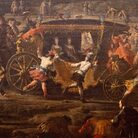 Dal 20 December 2025 al 20 April 2026
Caserta | Reggia di Caserta
Dal 20 December 2025 al 20 April 2026
Caserta | Reggia di Caserta
Regine: trame di cultura e diplomazia tra Napoli e l’Europa
-
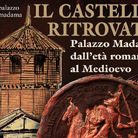 Dal 19 December 2025 al 23 March 2026
Torino | Palazzo Madama - Museo Civico d’Arte Antica
Dal 19 December 2025 al 23 March 2026
Torino | Palazzo Madama - Museo Civico d’Arte Antica
Il castello ritrovato. Palazzo Madama dall’età romana al medioevo
-
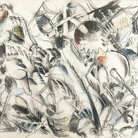 Dal 17 December 2025 al 19 January 2026
Roma | Palazzo della Cancelleria
Dal 17 December 2025 al 19 January 2026
Roma | Palazzo della Cancelleria
De Humana Mensura di Linda Karshan
-
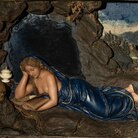 Dal 18 December 2025 al 12 April 2026
Firenze | Gallerie degli Uffizi
Dal 18 December 2025 al 12 April 2026
Firenze | Gallerie degli Uffizi
Cera una volta. Sculture dalle collezioni medicee
-
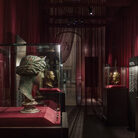 Dal 11 December 2025 al 9 April 2026
Firenze | Museo Archeologico Nazionale di Firenze
Dal 11 December 2025 al 9 April 2026
Firenze | Museo Archeologico Nazionale di Firenze
Icone di Potere e Bellezza
-
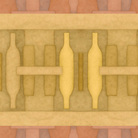 Dal 11 December 2025 al 11 January 2026
Roma | Palazzo Esposizioni Roma
Dal 11 December 2025 al 11 January 2026
Roma | Palazzo Esposizioni Roma
Giorgio Morandi nella Collezione Eni. Un viaggio attraverso la storia culturale del cane a sei zampe e l’eredità di Enrico Mattei



